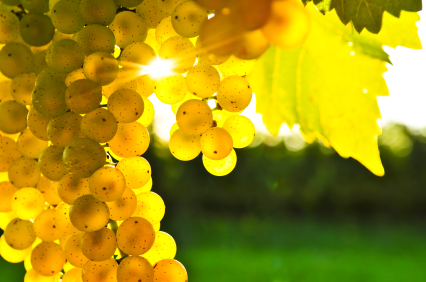I was in France for most of May and I drank a reasonable amount of their white wine. Ignoring for this column the vast quantity of Champagne I sucked up (The Grand Cru Malard Blanc de Noir was especially wonderful. If you ever spot a bottle jump on it). I found myself rediscovering French White wine.
[related_content slugs=”the-very-particular-approach-of-the-rioja-wine-region,dr-booze-breaks-the-50-mark,time-for-the-dr-booze-challenge” description=”More from James Romanow” position=”right”]
Like most people my age, I started on German white wines, but I very quickly moved west to France. The variety of wine from there is like nowhere on earth, compounded by the fact that the French are masters of blending varietals into something completely different. France is overlooked by many people these days, who prefer the blunter marketing from New World vintners. (Menage a trois – America – anyone? How about Cats pee on a Gooseberry bush – New Zealand?) But if ever there was a time to try their wines it is now, while they fight for market share.
Take for example Mouton Cadet. This wine has been one of the few stalwarts of my entire adult life. It was available, back when I was 18: In those days in case you missed it, you could only get a job at the Government Liquor Commission if you were a teetotaling Methodist, who could be trusted both with the inventory and to make the degenerate buyer (that would be me) feel properly diseased.
Ignoring the constant human desire to wag fingers and returning to a much happier topic, the current version of the Mouton Cadet is clearly a mix of sauvignon blanc, chardonnay, and something else, I would guess maybe chenin blanc but I am not sure. Whatever the combination, it provides a more delicate herb and lime bouquet than many whites, with a brisk attack and a slightly rounder mid palate that finishes slowly. You do not expect this much from such an inexpensive wine.
Of course if you are a stick-in-the-mud, such miscegenation (dogs mating with cats and more than one grape in your glass) simply will not do. In which case Iíd point you to any of a number of single varietal bottlings.
One obvious answer is to buy a bottle of Sauvingon Blanc. The grape finds its finest expression in the Loire in the Sancerre appellation. But such wines are highly valued and I doubt too many readers are willing to toss down $25 for a wine that can be had for as little as $12 from Chile.
You should some day, and then maybe you will understand the difference ten bucks makes. But assuming you are still unwilling to unbelt, there are fine examples of French winemaking with this grape. A beautifully vinified and elegant French example of sauvignon blanc is Destinea. It costs as little as the wines from other countries, and substantially less than the New Zealand alternative. If you shop there you need to try Destinea.
This is a Loire wine and a great example of what the grape is capable of achieving. Brisk without aggression, herbal without becoming overdone into asparagus territory, and ever so slightly fruity on the finish, Destinea is an elegant wine that will please every SB fan.
The wines from the south of France benefit from a climate not too different from that of California, and all sorts of wines are produced down this way. If you are a true Francophile (i.e. snob) they are insufficiently elegant (i.e. expensive.) On the other hand, if you view the stuff in the glass as a beverage some wines from this area are flat out stunning. We were in the Dordogne and Paris and the wine was widely available. (Although in the Dordogne they are fiercely enthusiastic about their wines and tend to distribute wines from elsewhere in France sullenly at best. Mind you their wines are worth trying and cost a great deal less. If you should be so lucky as to spot a bottle from La Guyenne – in The Cellar in Calgary maybe? – buy it).
Vieille Ferme (AKA “The Chicken Wine”) from Luberon is a fine example of such over-delivering. Fresh, smelling of almonds and green fruits with a nutty creamy finish, if you like wine you need to give this one a try. The blend, primarily grenache blanc, is like nothing you will find elsewhere.
Another wine from the south of France appeared here last year, Marius by the Chapoutier firm. Chapoutier is the bottler of organic and biodynamic wines famous throughout the world, including the stunning La Chapelle. Their Marius wine is a professionally produced product at a great price made with some offbeat varietals: Terret and Vermentino.
Vermentino is a graceful floral wine that is found throughout the French and Italian riviera. Terret offers a brisker almost playful attack. The combination of the two is absolutely brilliant, and only $15.
Finally, no wine column about France would be complete without a mention of what happens in Burgundy. Without much work you will turn up some stunning examples of chardonnay from the area, but allow me to point you to one of those wines that somehow escapes the windbags who blather on at dinner parties (and on. and on. And on.) : Aligote
This is a completely different white, and it will not appeal to everyone. It is medium bodied, a bit thinner than a chardonnay and slightly more acidic, with a strongly herbal palate and a long lingering mineral finish.
Jaffelin Aligote is my favourite wine with Indian spicy cilantro sauce, and similar chutneys and sauces. This one is a must-try for those who live beyond the beaten path.
Vielle Ferme, France, 2009. $13.57 ****
Mouton Cadet, France, 2011. $13.99 ****
Marius White, France, 2011. $15.99 ****
Destinea Sauvignon Blanc, France, 2011. $15.05 ****
Jaffelin Bourgogne Aligote, France, 2010. $20.14 ****
—
James Romanow writes about Wine and all things boozy for the Spectator Tribune. Follow him @drbooze.
